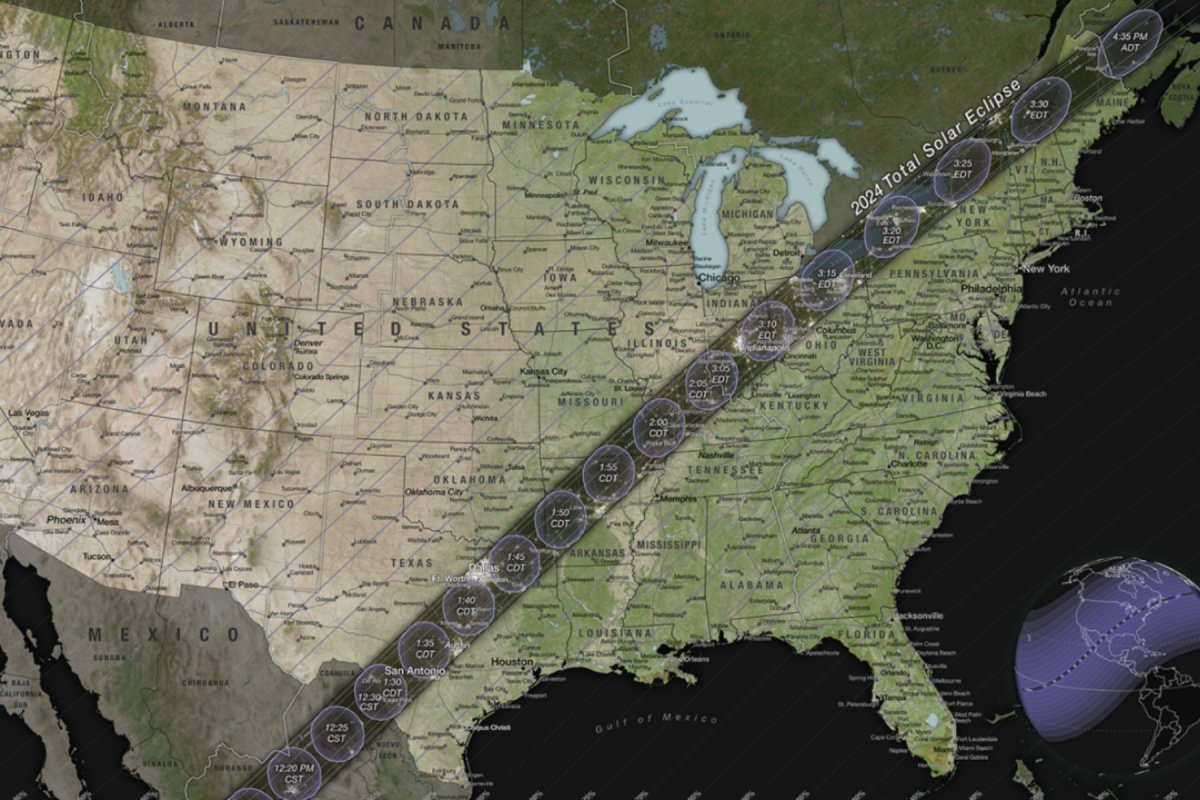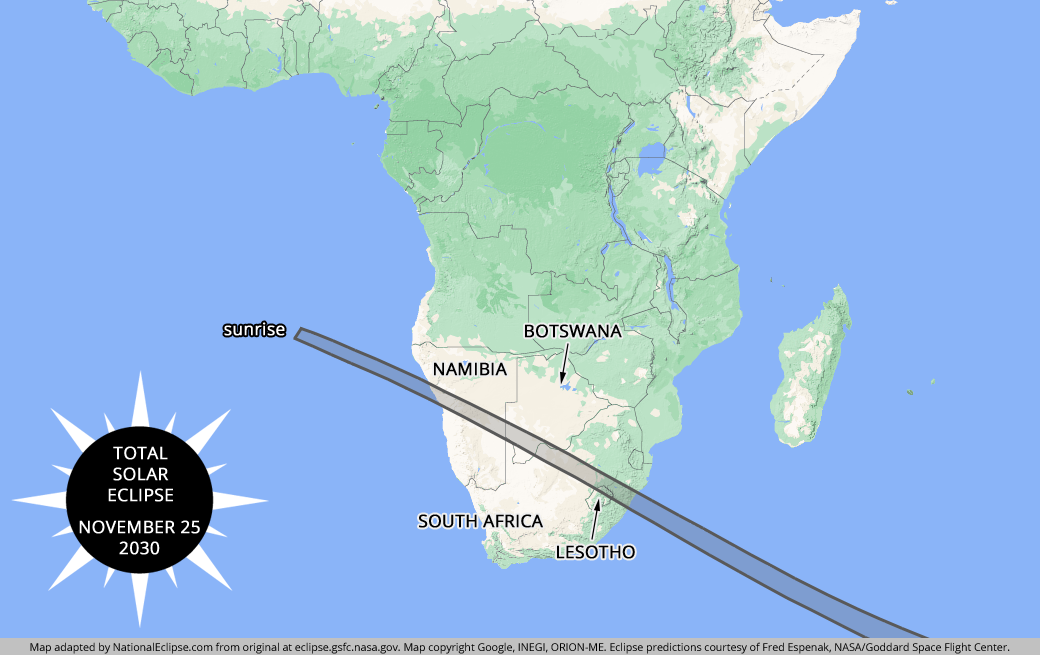Solar eclipse 2024 expected on April 8

A total solar eclipse will pass over the U.S. in April, casting temporary darkness over more than a dozen cities during the middle of the day.
The total solar eclipse will begin just after midday in the south of the country on April 8, and will travel directly over 13 states. For astronomy enthusiasts, NASA has provided trajectory maps that show exactly where and what time Americans can view the rare phenomenon next month.
The eclipse, the first of its kind in the U.S. since 2017, will cross the continent of North America, starting in Mexico before entering the U.S. and leaving via the northeast into Canada.
Those in what is known as the “path of totality” will experience dark skies for several minutes as the moon blocks the light path of the sun for a few minutes. Those not in the direct path will still experience some effects, to a smaller degree.
Brian Lada, an AccuWeather astronomy expert, told Newsweek: “You definitely want to be looking at the sky on April 8th because if you miss the solar eclipse this year, you have to wait two decades until the next chance to see a total solar eclipse from the contiguous United States.”
“Total solar eclipses themselves are not rare. They happen every year somewhere around the world. What is rare is to have them visible here in the United States.”
Where the solar eclipse be seen
A NASA map shows the full trajectory of the eclipse across the country and provides estimated times. Starting in Texas at around 1:30 p.m. CDT, the eclipse will occur in Oklahoma, Arkansas, Missouri, Illinois, Kentucky, Indiana, Ohio, Pennsylvania, New York, Vermont, New Hampshire, and finally over Maine at around 3:30 p.m. EDT.

Some major cities will also turn dark on April 8. In the following cities, the maximum totality will begin at the following times, according to information provided by NASA:
- Dallas, Texas – 1:42 p.m. CDT
- Idabel, Oklahoma – 1:47 p.m. CDT
- Little Rock, Arkansas – 1:52 p.m. CDT
- Poplar Bluff, Missouri – 1:56 p.m. CDT
- Paducah, Kentucky – 2:01 p.m. CDT
- Carbondale, Illinois – 2:01 p.m. CDT
- Evansville, Indiana – 2:04 p.m. CDT
- Cleveland, Ohio – 3:15 p.m. EDT
- Erie, Pennsylvania – 3:18 p.m. EDT
- Buffalo, New York – 3:20 p.m. EDT
- Burlington, Vermont – 3:27 p.m. EDT
- Lancaster, New Hampshire – 3:29 p.m. EDT
- Caribou, Maine – 3:33 p.m. EDT
The next eclipse
After Monday, the next total solar eclipse won’t occur until 2026. But it will graze the top of the world, dipping into Greenland, Iceland and Spain. The next one in 2027 will march across Spain and northern Africa, with totality lasting an incredible 6 1/2 minutes.
Africa will experience a total solar eclipse on November 25, 2030, with the path of totality crossing Namibia, Botswana, South Africa, and Lesotho. The eclipse will last 3 minutes and 44 seconds, with totality occurring in the morning. All of southern Africa will experience a partial solar eclipse, while the path of totality will cross over Namibia, Botswana, Lesotho, and South Africa.

North Americans will have to wait until 2033 for another total solar eclipse, but it will be limited to Alaska. In 2044, Western Canada, Montana and North Dakota will have front-row seats. And in 2045, the U.S. will once again experience a coast-to-coast total solar eclipse.
How to safely watch the eclipse
NASA has warned anyone turning to the skies to watch the eclipse should take proper precautions to prevent potentially serious damage to their eyesight. And don’t forget a special glasses to safely watch the eclipse.
Practically everyone on the continent will get to see a partial eclipse. You can watch the whole thing unfold online, too. NASA is offering several hours of streaming online from several cities along the totality path. The Associated Press will bring live coverage of watch parties and festivities.
“When watching the partial phases of the solar eclipse directly with your eyes, which happens before and after totality, you must look through safe solar viewing glasses (‘eclipse glasses’) or a safe handheld solar viewer at all times,” NASA said.
“You can also use an indirect viewing method, such as a pinhole projector.”
Source: Newsweek

This article is published by either a staff writer, an intern, or an editor of TheAfricanDream.net, based on editorial discretion.





